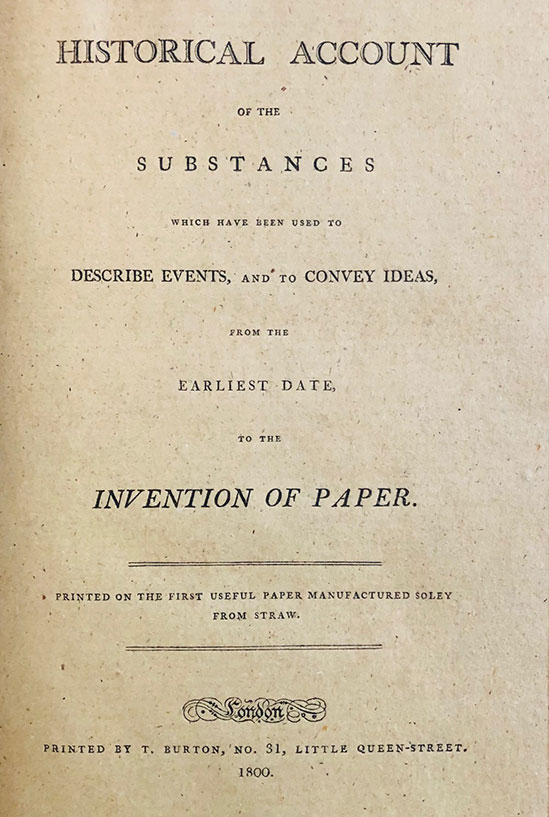This is a guest post by Joshua Calhoun, Associate Professor of English and Faculty Affiliate with the Nelson Institute for Environmental Studies at the University of Wisconsin-Madison.
Stone, wood, paper, plants, fabric. These are the textured impressions I find in the memory that, recalled here, become a story about finding stories. One way to tell this story—one that feels all the more urgent after a year of relying almost entirely on digital archives—is to give weight to the materials that shape our memories of archival research.

Henry David Thoreau (1817–1862), Journal : autograph manuscript signed : Walden [Concord], 1845 July 5–1846 Mar. 27. Purchased by Pierpont Morgan with the Wakeman Collection, 1909. MA 1302.8
Not all trips to the archives are especially memorable. But once, while on a short research trip to the British Library in London, a friend and I caught a bus to Oxford to spend a day at the Bodleian Library, but we also rode a roller coaster at the St Giles’ Fair while waiting for our readers’ cards, then spent the day examining unique copies of sixteenth-century books, then shot crossbows, and missed, and did not win a prize. That’s a different story. Another time, in January 2016, I went to the Morgan Library & Museum to look at something else entirely and instead spent the day poring over a handwritten journal that Henry David Thoreau kept while at Walden Pond.
Stone
The original Pierpont Morgan Library, built at the turn of the twentieth century with Tennessee marble, is classical revival style in the hue of pink. A century of additions and restorations later, “The final structure of the Morgan Library & Museum is now the interplay of the old and new” (New York Spaces). But before you can know or be reminded of any of this, you first have to find the damn thing. I understand from New Yorkers that this is an easy task because of the city’s grid layout, but I grew up navigating by topography 300 miles up the Hudson River in the Adirondack Mountains. Without ridgelines to guide me, I navigate badly by iPhone like a tourist. I was trying to write a book, in 2016, about how easy it is to overlook the natural resources that allow human communication. I’m aware, on reflection, that the rare earth minerals that were quarried somewhere else to make my iPhone capable of navigation are in conversation with the marble that was quarried somewhere else to make the Morgan.
Wood
Inside, in Mr. Morgan’s Library, the bookshelves are triple tiered and made from inlaid Circassian walnut that also came from somewhere else. The newer Sherman Fairchild Reading Room, where researchers work, rhymes with the architecture of the original. It also recalls a forest: wooden floor and furniture surrounded by two tiers of wooden bookshelves that extend to the skylit, translucent ceiling. Light filters down on the rare manuscripts and books that researchers are examining, some so carefully that they do not hear me enter.
I had requested some printed books and manuscripts in advance—mostly from the sixteenth and seventeenth centuries. But I was fascinated that, despite centuries of raw-material shortages, paper was basically made from the same stuff—recycled rags—in ca. 1850 America as in ca. 1550 Europe. So I also requested some eighteenth- and nineteenth-century books about papermaking and the search for raw materials that could be used to replace rags.

Matthias Koops (1789–1805), Historical account of the substances which have been used to describe events, and to convey ideas, from the earliest date to the invention of paper. London : Printed by T. Burton, 1800. PML 195544
Plants
Matthias Koops’ Historical Account of the Substances Which Have Been Used to Describe Events, and to Convey Ideas, From the Earliest Date, to the Invention of Paper was printed in 1800, but its paper was made from straw, not rags. In a well-lighted space like the Morgan, flecks of organic matter in the paper flash gold as the pages are turned. I had consulted other copies of Substances at other libraries, and I couldn’t resist inspecting a new one because, as I eventually wrote in my book, Koops’ “Substances is perhaps the most stunning conjunction of form and content that I have held: a book about the history of books printed on mass-producible paper made by replacing scarce, imported rag fibers with locally grown, abundant oat and wheat straw.” I wasn’t planning to write about Koops or Thoreau in my book about poetry, papermaking, and ecology in Renaissance England, but archives are serendipitous spaces.
Paper
The paper in Thoreau’s journals from the 1840s is, like sixteenth-century paper, made from rags. But it is “wove” paper made by a machine, and the surfaces tend toward homogeneity. Gone is the texture one can see and feel in earlier handmade paper, especially in Koops’ Substances, where flecks of organic matter tell a story about the paper’s origins. I was losing part of a day in the archives looking at paper that had nothing to tell me about a book project I needed to finish. But my fingers were also touching the leaves on which Thoreau had penned the ideas that became a book that I had fallen in love with years earlier in the most impressionable period of my life. I was determined to make some sense of an experience that felt intimate and unbelievable to me. I turned the pages, goosebumps on my arms, looking for quotations I could recite as perfectly as old song lyrics, lines about quiet desperation and deliberate living and marrow-sucking and new wearers of clothes.
Fabric
Thoreau’s penmanship was abysmal, and I struggled to decipher a single word, much less a whole sentence. I defaulted to the most basic of paleographical skills: trying to identify unique letterforms as a basis for decoding full words. If you can figure out a sloppy writer’s uppercase T, for instance, you can figure out what their lowercase h and e look like. But I was failing at even this task. Then, in the page shown here, I noticed a unique letterform about a half dozen lines down, on the left margin: a capital letter that had to be a Z. And suddenly, out of the mire of Thoreau’s scrawl, Zilpah White emerged. Zilpah White, the former slave whose Loyalist master abandoned her to fate when he fled the country in 1775.
In moments like this, the sense of wonder and involvement that overtakes me in the library is not unlike that of live theater. The day before I stumbled upon Zilpah White in the forest-like Morgan reading room, in the thicket of Thoreau’s handwriting, I was lucky enough to see a fairly new broadway musical called Hamilton. (I regret that not all trips to the archives are so memorable.) My colleague and Holding History co-director Sarah Marty had pointed out to me that the actors in the first half of Hamilton are dressed in the color palette of parchment and paper, an artistic choice that is brilliant in its subtlety. Drawing from a different archive, or drawing different details out of that archive, a new kind of story is told. How could this way of telling the story not have existed before?
How could I have thought I could write this book without Zilpah White? I finally finished the book, The Nature of the Page: Poetry Papermaking, and the Ecology of Texts in Renaissance England. Thanks to a particularly memorable visit to the Morgan, here’s how the first chapter ends:
White had gone to Walden Woods not to suck the marrow out of life, but to survive independently, and she did so with a flax wheel …. Thoreau, telling White’s story decades after her death, writes that “she spun linen for the townsfolk, making the Walden Woods ring with her shrill singing.” Zilpah White’s story is inextricably connected with the story I am telling about paper, and the role she played in the history of plants as rags as paper is largely hidden from view. “When slavery ended,” writes Elise Lemire (in Black Walden: Slavery and Its Aftermath in Concord), “at least some former slave women were given one of their master’s spinning wheels as a means of providing for themselves.” It was a short-term solution, however, for the work these women could do on small spinning wheels would soon be overwhelmed by industrial factories that could make linen cloth more quickly and more reliably and sell it more cheaply …. Hidden below the canopy of the familiar, anthropocentric narrative in which “rags make paper” are dense understories of raw materials, of localized biodiversity, of bruised plant stalks and boiled animal hooves and of aching, dehumanized bodies. If we look closely, we begin to find stories in the fibers of historical paper that prompt us to recalculate the costs of supposed cheapness.
 Joshua Calhoun, Associate Professor of English and Faculty Affiliate with the Nelson Institute for Environmental Studies at the University of Wisconsin-Madison, specializes in Shakespeare, 16th- and 17th-century poetry, the history of media, and the environmental humanities. His work has been published in PMLA, Shakespeare Studies, and Environmental Philosophy. His first book, The Nature of the Page: Poetry, Papermaking, and the Ecology of Texts in Renaissance England (UPenn Press, 2020), explores the ecopoetic interplay between literary ideas and the physical forms they are made to take as paper texts. Calhoun is also the co-founder of Holding History, a mentorship-driven, public-engagement project that involves hands-on training in book making and archival research.
Joshua Calhoun, Associate Professor of English and Faculty Affiliate with the Nelson Institute for Environmental Studies at the University of Wisconsin-Madison, specializes in Shakespeare, 16th- and 17th-century poetry, the history of media, and the environmental humanities. His work has been published in PMLA, Shakespeare Studies, and Environmental Philosophy. His first book, The Nature of the Page: Poetry, Papermaking, and the Ecology of Texts in Renaissance England (UPenn Press, 2020), explores the ecopoetic interplay between literary ideas and the physical forms they are made to take as paper texts. Calhoun is also the co-founder of Holding History, a mentorship-driven, public-engagement project that involves hands-on training in book making and archival research.
